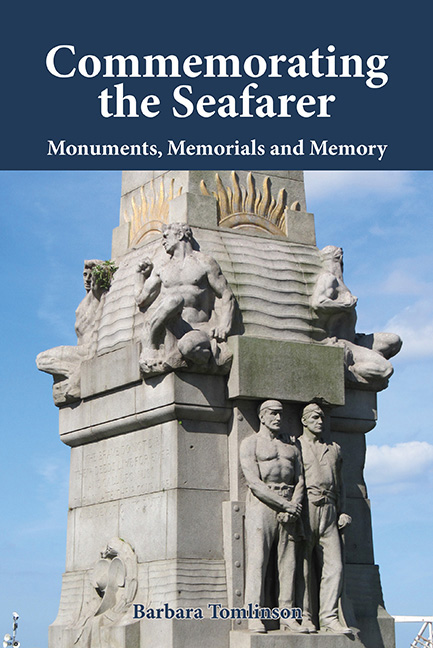Book contents
- Frontmatter
- Dedication
- Contents
- Illustrations
- Preface
- Acknowledgements
- Introduction
- 1 Shifting Loyalties: Naval Memorials, 1628–783
- 2 The Age of Heroes: Naval Memorials, 1783–815
- 3 Pax Britannica: Naval Memorials, 1815–914
- 4 Stormy Weather: Conflict and Sacrifice in the Twentieth Century
- 5 Commerce and Philanthropy: Mercantile Commemoration
- 6 Lost at Sea: Maritime Accidents
- 7 Maritime Explorers: Drake to Shackleton
- 8 Inshore: Fishermen, Lifesavers and Leisure
- Conclusion
- Bibliography
- Index
7 - Maritime Explorers: Drake to Shackleton
Published online by Cambridge University Press: 08 May 2021
- Frontmatter
- Dedication
- Contents
- Illustrations
- Preface
- Acknowledgements
- Introduction
- 1 Shifting Loyalties: Naval Memorials, 1628–783
- 2 The Age of Heroes: Naval Memorials, 1783–815
- 3 Pax Britannica: Naval Memorials, 1815–914
- 4 Stormy Weather: Conflict and Sacrifice in the Twentieth Century
- 5 Commerce and Philanthropy: Mercantile Commemoration
- 6 Lost at Sea: Maritime Accidents
- 7 Maritime Explorers: Drake to Shackleton
- 8 Inshore: Fishermen, Lifesavers and Leisure
- Conclusion
- Bibliography
- Index
Summary
Explorers are often commemorated by public memorials erected long after their death. They became a popular subject for municipal statuary and other commemoration during the nineteenth and twentieth centuries. The whole concept of ‘explorer’ is generally speaking a post-Renaissance, European one. The search for identity by the settlers of the lands he discovered was one good reason to celebrate the explorer as a founding father. As scientific research assumed increased importance in the wake of the Enlightenment, those who died in the quest for knowledge were seen as martyrs to a worthy cause. The return of the traveller to tell his tale and its eventual publication were essential in establishing a posthumous reputation. Records and narratives are all-important. Although Sir John Franklin's much-commemorated 1845 expedition might be seen as an exception to this rule – there were no survivors and only a couple of official documents were recovered – a narrative of sorts was established by the findings of the search expeditions. Statues have even been erected to figures verging on the mythical, such as the eleventh-century voyager Leif Ericsson in Reykjavik, or the tenth-century Maori, Kupe Raiatea, in Wellington. Even in those cases, oral traditions had put a name to a discovery. Most human migration went unrecorded.
Sea dogs
The earliest British circumnavigations were military incursions into Spanish spheres of influence in quest of plunder or military and commercial advantage. No contemporary memorials survive to Sir Francis Drake (who was buried at sea in 1596) or to Walter Ralegh (executed in 1618), although his body still lies in St Margaret’s, Westminster. Such men were immortalized by a series of published voyage narratives and would be referenced as patriotic heroes during future periods of conflict. Busts of Ralegh and Drake by Peter Scheemakers were included in the ‘Temple of British Worthies’ at Stowe, designed for Richard Temple, first Viscount Cobham, by William Kent and erected in 1734–35. This was a time of trade disputes with Spain, eventually resulting in the War of Jenkins's Ear.
During the early part of the nineteenth century the Elizabethan privateers had their place in published national histories. Their freebooting activities were sometimes questioned, sometimes excused, but were not unduly glorified. They only gained more widespread popularity during the zenith of the British Empire.
- Type
- Chapter
- Information
- Commemorating the SeafarerMonuments, Memorials and Memory, pp. 177 - 202Publisher: Boydell & BrewerPrint publication year: 2015



